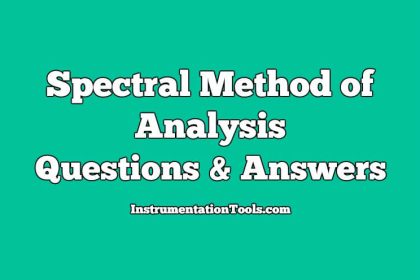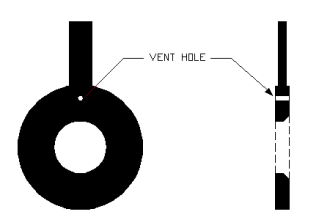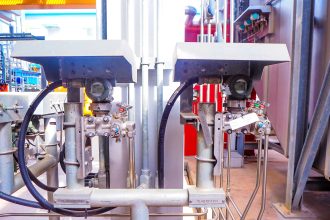Pulse Height Analyzer Questions & Answers
1. A discriminator circuit is which of the following circuits?
a) Wheatstone bridge
b) Instrumentation amplifier
c) Astable multivibrator
d) Schmitt trigger
Answer: d
Explanation: A discriminator circuit is a Schmitt trigger circuit. There are two discriminator circuits in pulse height analyser.
2. Which of the following is the function of the discriminator?
a) Rejects signals below a certain voltage
b) Rejects signals above a certain voltage
c) Rejects signal in a range alone
d) Filters noise alone
Answer: a
Explanation: The discriminator can be set to reject signals below a certain voltage. This is required for excluding scattered radiation and noise.
3. The difference between the pulses having amplitudes between the two triggering levels is called as __________
a) Pulse width
b) Energy gap
c) Window width
d) Amplitude variation
Answer: c
Explanation: The difference between the pulses having amplitudes between the two triggering levels is called as window width. It is also called the channel width.
4. The pulses having amplitudes between the two triggering levels are given by which of the following components?
a) Pre-amplifiers
b) Linear amplifiers
c) Anti-coincidence circuits
d) Discriminators
Answer: d
Explanation: The pulses having amplitudes between the two triggering levels are given by discriminators. There are two discriminators.
5. Schmitt triggers are followed by which of the following components?
a) Pre-amplifier
b) Linear amplifier
c) Anti-coincidence circuit
d) Discriminator
Answer: c
Explanation: Schmitt triggers are followed by anti-coincidence circuits. The output of anti-coincidence circuit is given to counters.
6. Which of the following components cancels all the pulses which trigger both the discriminators?
a) Pre-amplifier
b) Linear amplifier
c) Anti-coincidence circuit
d) Discriminator
Answer: c
Explanation: Anti-coincidence circuit cancels all the pulses which trigger both the discriminators. The output of anti-coincidence circuit is given to counters.
7. Which of the following is used when the number of channels is ten or less?
a) Two discriminators in series
b) Two discriminators in parallel
c) Series array of discriminators
d) Parallel array of discriminators
Answer: d
Explanation: Parallel array of discriminators are used when the number of channels is ten or less. If the number is more than ten this is not preferred.
8. If number of channels is more than ten, the problems of stability of discrimination voltages arise.
a) True
b) False
Answer: a
Explanation: If number of channels is more than ten, the problems of stability of discrimination voltages arise. Problems also arise with increase of adequate differential non-linearity.
9. The signal reaching which of the following components is the one lying in the window of pulse height analyser?
a) Pre-amplifier
b) Linear amplifier
c) Counter
d) Discriminator
Answer: c
Explanation: The signal reaching the counter is the one lying in the window of pulse height analyser. Scalar and counter follow the anti-coincidence circuit.
10. The measurement of pulse height is useful for energy determination.
a) True
b) False
Answer: a
Explanation: The measurement of pulse height is useful for energy determination. This is accomplished by the pulse height analyser.















